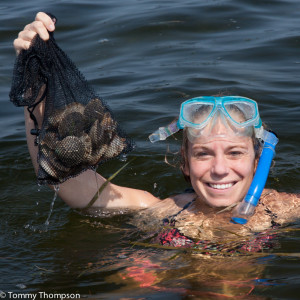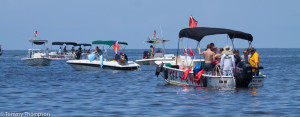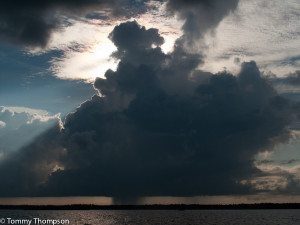Tips For Successful Scalloping During Rainy Season on Florida’s Big Bend, 2015
In the late summer, water visibility can hinder and slow the harvest of bay scallops. This year, they’re plentiful along our coastline, but are often hard to see.

We’ve had more than our fair share of rain on the Big Bend, too. Mornings have been calm, but with high humidity and high air temperatures, thunderstorms have been building up every afternoon. Usually they form on shore, but some can eventually drift off the coast in the late afternoon, depending on the strength of the east coast sea breezes. What that means for you, the scalloper, is that you need to take your trips early, watch the radar (use the Weather Bug app on your smartphone!), and try to get back to port by mid-afternoon at the latest.

Despite the amount of rainwater we’ve seen in ditches and pastures miles from the coast, the visibility of the Gulf waters isn’t as bad as I expected. Scallopers north of Steinhatchee and Keaton Beach are doing well, especially off Piney Point and off Dekle Beach. The only thing I can’t predict is just how long the visibility will be good. It usually takes several weeks for the leaching cycle to complete.


